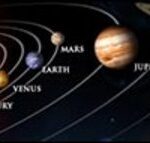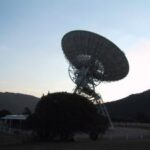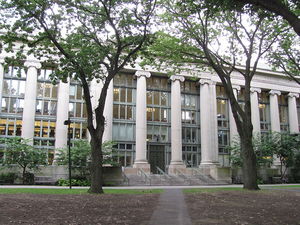The planet Neptune is the eigth planet from the Sun and it is the fourth largest planet almost 17 times larger than the Earth. It is also one of the slower planets, taking 165 years to orbit the Sun in an elliptical manner. It has a diameter of 49,532 km, and orbit of 4,504,000,000 km from the Sun, and a mass of 1.0247e26 kg. It spins around once approximately every 16 hours and 7 minutes. The planet cannot be seen without a telescope. It was named after the Roman god Neptune, the god of the sea. The Greek counterpart as the god of the sea is Poseidon.
It was discovered by the Italian scientist Galileo Galilei in the year 1613. Observing it only two consecutive nights, he was not able to understand clearly the movements of the planet thus mistaking it to be a star. In the year 1846, its identity had been revealed. It was discovered to be a planet because astronomers thought of Uranus not behaving according to the “Laws of Motion” by Newton. Working independently, Urbain J.J. Leverrier’s and John Couch Adams calculations were confirmed by director Johann G. Galle along with his assistant Heinrich L. D’Arrest of the Urania Observatory. With this discovery, the French and English sought credit and rights to give a name to the newly discovered planet. This day, both countries have been given credit for the discovery of Neptune.
The planet is composed of Hydorgen, Helium, water, and silicates. Silicates are minerals similar to the Earth’s rocky crust but Neptune does not have a solid surface. Clouds that surround the planet are thick and move rapidly at the rate of 700 miles per hour. Farthest to the surface consist of frozen methane. The darker clouds below the clouds of methane include hydrogen sulfide. The blue color of the planet is largely the result of red light sucked in by the methane gas found in the atmosphere.
The planet was visited on August 25, 1989 by only one spacecraft, the Voyager 2. The spacecraft found a dark section resembling what was termed as a ‘hurricane’ consisting of massess of gas. It was called “the Great Dark Spot”. However, it vanished in the year 1994 by the Hubble Space Telescope. It was thought to have either dissipated or it was just masked by the atmosphere.
With the 13 known satellites, seven are named and Triton is the largest with a diameter of 2,705 kilometers and with a distance of 354,760 kilometers away from Neptune. It is the only known satellite with a retrograde orbit and travels once around the planet every six days. The other seven moons Naiad, Thalassa, Despina, Galatea, Larissa, Proteus, and Nareid. Except for Triton which was discovered by William Lassel and Nereid by Gerard Kupier, the other moons had been discovered by the Voyager 2.
Neptune has four rings. Three distinct ones and one faint ring. Compared to the rings of Saturn, these rings are much darker and fainter. The rings consist of dust particles and are unevenly spread. The outermost ring is 63,000 kilometers away from the planet is also know as the main ring or Adams. The other three are Plateau or Lassell, Arago, Inner or LeVerrier and Diffuse or Galle.
Reference:
-Neptune Facts and Information – Happy Living
Article Resource: Ronald Uy





